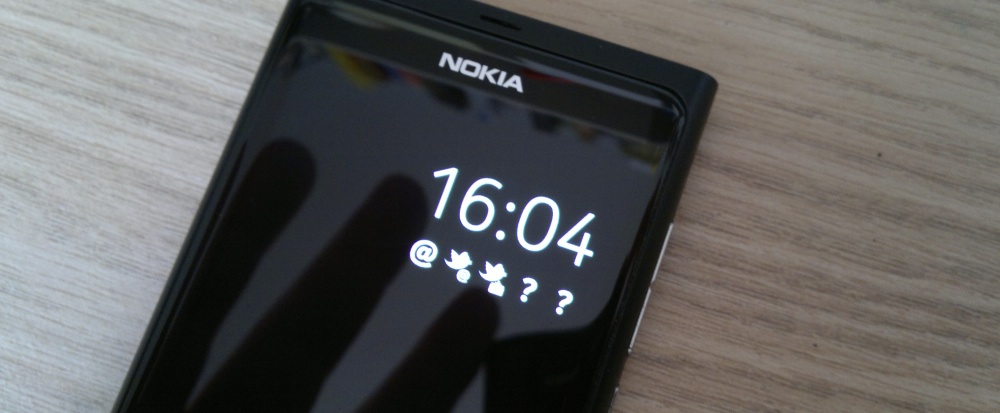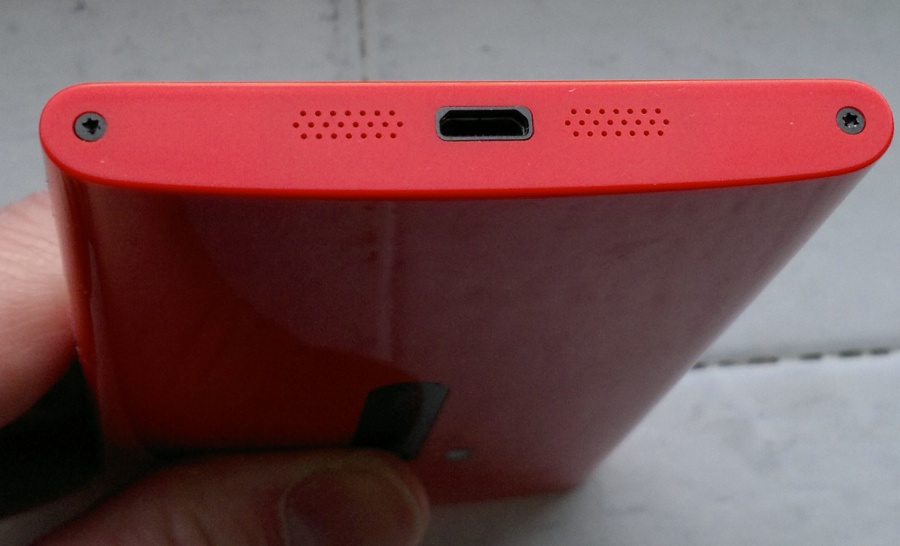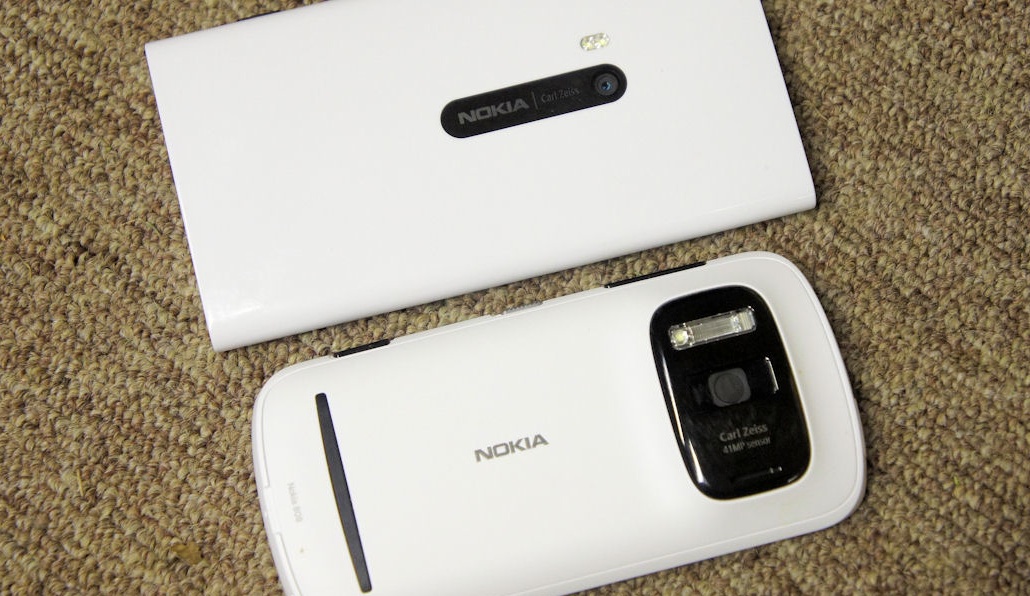Elsewhere on this site, Rafe will be poring over Windows Phone 8 in great detail - I wanted to concentrate here on some of the sticking points, some of the objections to Windows Phone that I (and others) have raised myself over the last year or so. How many of these are still valid and are there workarounds?
In no particular order, then, here are some of the current (and past) complaints about the platform and the devices which run it:
- One of the most common complaints about the Windows Phone platform, Wi-fi insists on turning off a few minutes after the screen goes off, meaning either an 8 second connection delay when you power the screen on again or plenty of ad-hoc cell data use when the screen's off, all coming out of your tariff. Answer: Microsoft is addressing this 'feature' in the near future as part of a minor platform update (the first rollout has been for the HTC 8X). Hopefully along with a more power efficient Wi-fi stack in the first place - after all, every other platform seems to have no trouble maintaining a permanent Wi-fi connection.
- No 'always on' clock, as is common on Symbian and Meego devices (shown below). Answer: Maintaining always on pixels relies on both the presence of an AMOLED screen and support within the OS. With more than half the available Windows Phones having IPS or TFT screens, the chances of platform-wide adoption of such a feature seem small.

A typical Nokia AMOLED always-on clock display, here modelled on the Meego-powered N9, but also found on many Symbian-based phones, including the N8, C7, C6-01, E7, N86 and, of course, the 808 PureView
- NFC's just as proprietary as implementations on other platforms - yes, you can tap to pair and tap for information on a tag, but the 920 can't even exchange information with other Nokias from other platforms, such as my 808 PureView. Answer: All operating system makers and manufacturers need to pull their fingers out here, I think - a standard is needed such that device A can be tapped with device B to share contact info, a file, a playlist, a photo or video, even if the manufacturers and platforms are different. Until this is the case, NFC sharing will never take off.
- Bluetooth file sending isn't possible. Answer: Although somewhat clunky in implementation, this is now possible with Windows Phone 8. If you try and send the right sort of content (e.g. a contact, a photo, a video or a DRM-free music file - office documents, URLs etc don't yet work) and happen to have Bluetooth turned on (it won't do it for you) then you can 'share via' 'Bluetooth' to most other phones. No doubt the implementation will get more polished as time goes on, but at least the main uses cases are now covered.
- There's no decent podcast client. This from Symbian users from years past, since Nokia had a good client built into the OS. Answer: Symbian hasn't had a built-in podcast client for several years though, and both it and Android have relied on third party clients, so Windows Phone's position isn't that different in this regard. The most popular is probably Podcatcher, which has auto-refresh and auto-download, but does rely on you bringing it back to the foreground in order to work with feeds, it relies on you waiting for Wi-fi availability and it relies on manual deletion of old, unwanted programmes. However, it's very workable, and playback and downloads can carry on even if you've switched to another app or screen. Roll on future updates, mind you!
- There's no Google+ application. Answer: Not yet, anyway, though I'd bet on that arriving in short order from the big 'G'. In the meantime, it's a cinch to use (and access via a Live Tile 'pin') the excellent touch-friendly mobile web version of Google+, as shown above.
- You have to connect up to a desktop to update the OS. Answer: Not anymore, Windows Phone 8 supports completely over the air updates, though the old desktop client method is still there as well. We've yet to see one of these updates in action at 'All About Towers', but presume the over the air process will involve a small 'delta' patch rather than a full re-download of the OS.
- There's no flashlight function built-in, as on all of Nokia's recent Symbian phones. Answer: True, but then this isn't built into Android devices either, and for both this platform and Windows Phone there are numerous excellent third party utilities (e.g. Flashlight-X) to activate the camera video LED as a torch.
- About half the applications, plus the Start screen, don't work in landscape mode. Answer: True, they don't, and they don't to a similar degree in Android, though Microsoft would argue, as would Google, that landscape is implemented for the screens and apps which need it. Which is fair enough, even if it does mean a fair amount of phone rotation if you're juggling certain apps and tasks.
- The recent apps list is still limited, to 7 entries. Answer: Yes, though as we know, these tiles don't really represent running applications. More apps that are frozen and may possibly be resumed if there's a helpful wind and the developer has chosen to implement 'fast resume' properly. Of greater interest is what happens when a user taps on a tile or application icon - if written well to work with Windows Phone 8, there can still be a good user experience, with a fast resume of the application state as it was when left. Microsoft's paranoia about software led them to delay releasing the SDK until the very last minute, which means that only a small fraction of third party applications work in this way, but the number is rising fast and some of the best known examples work perfectly (e.g. the commercial Twabbit Twitter client) and quickly. Add in an increased number of background task options and, in short, lack of multitasking is less of an issue than it was when Windows Phone started. Yes, most Symbian or Android users will still notice the odd delay here and there, but they're rarely showstoppers, especially if you choose your third party applications carefully enough.
- Live tile notification numbers still get reset to zero when the tile is accessed, however briefly. Answer: It's true, and this is so common a complaint that surely it's been pegged for addressing within Microsoft, ideally as a setting where you can choose the notification number behaviour. We haven't heard anything along these lines, so don't hold your breath for this one.
- The volume keys still act for both multimedia and phone rings, so (for example) you either have to have your music and games at max volume or your phone rings at half volume. Or keep adjusting up and down all the time. Answer: Again, this is an obvious complaint, brought about by Microsoft's desire to simplify things for the user, since multiple volume controls (depending on the application/screen in use) were seen as confusing. I can see both sides of the argument and, again, a setting (e.g. "Independent media and telephony volumes") would be the way to handle this. Again though, don't hold your breath...
- When playing music over headphones, you can't adjust how it sounds without switching back to the Start screen and then heading into the depths of the System settings ('audio' is the section you need, right at the bottom of the Settings list). Answer: Utterly trivial for Microsoft to fix, with a shortcut to the appropriate Settings dialog - let's hope it makes the cut for the platform update in the New Year.
- General audio volume over the phone speaker isn't loud enough. Answer: This, at least, has been fixed in the new wave of Windows Phone devices - all the Windows Phone 8 units seem to have much more powerful audio output.

The Lumia 920's speaker grille. Don't be fooled by the iPhone-like dual grilles - just as on the iPhone there's only
one speaker and the other grille is a fake, designed to simply look cool(!) Actual volume output is very good.
- There's no FM transmitter. A complaint from many considering switching from Symbian, on which the feature was something of a staple (and very useful on car journeys). Answer: To be fair, FM transmission (also known as 'Play via Radio') is subject to interference from local stations and, with more and more cars now coming with Bluetooth audio built-in, and with more and more home equipment supporting DLNA, the need for an FM transmitter is gradually fading and, I suspect, may not ever appear on phones again.
- There's no FM radio at all in Windows Phone 8 handsets. Answer: Well, not yet. Most, if not all, the devices have the right hardware, but the relevant software component needs to be written into the platform. Microsoft and Nokia are probably looking at each other here... someone just port over the FM playing code from Windows Phone 7, ok?
- Despite having excellent music and media codecs built-in (after all, you can just drag and drop media across onto the mountable phone's disk store under Windows 7 and Windows 8), if you tap on MP3s and MP4s online then at least half the time you get a 'Sorry, we can't play this file' error. Answer: Of course, half the time it works fine, so there's probably something needing tweaking in Internet Explorer in terms of URLs and MIME types. Let's hope Microsoft has this one on its to-do list.
- It's a hassle sideloading media onto a Windows Phone. Answer: As intimated above, this is no longer strictly true. As of Windows Phone 8, the device appears as a regular disk under Windows 7 and 8, so media can be freely copied backwards and forwards. In fact, seeing as PIM sync and updates all happen over the air, there's little reason to ever use the official Windows Phone desktop software at all, unless you desperately want a hand-holding experience.
- Mac isn't so well supported as Windows in terms of desktop integration. Answer: This wouldn't actually be too surprising, given that Apple's Mac platform is the arch rival of Microsoft's Windows. However, in the interests of widening the userbase for the phones, Microsoft has released 'Windows Phone', previously called 'Windows Phone 7 Connector', with version 3.0 bringing much the same drag and drop and sync capability as the relevant Windows 7/8 software. In theory. Note that our own Ewan had issues with this utility. Early days, perhaps.
- There's no memory expansion. Answer: Yes, there is now. The Nokia Lumia 820, shown below, the Samsung Ativ S and HTC 8S all have official microSD expansion, for media use at least (you can't install apps on card). Other devices do have sealed flash memory and will be a personal assessment as to whether you can live with 4GB, 8GB, 16GB or 32GB of storage (clue: the latter two are probably OK for Windows Phone 8).

- There's no Instagram. Answer: You mean there's no way to mangle your photos and make them look like they were taken in 1940? Oh good. Ah, you wanted a real answer and not sarcasm? Instagram, like Spotify and (no doubt) a few other Web 2.0 services, is still waiting to be written, but I'd guess it will arrive in due course. I never want it within a mile of my phone, mind you....
- There's no Whatsapp for Windows Phone 8. Answer: Yet. Ask me again after Christmas, the Whatsapp people are hard at work on making it compatible. Honest.
- There's no Dropbox application. Answer: Again, yet. Microsoft said this was 'coming soon' back in October, so presumably it's not far off now.
- There's no Spotify client for Windows Phone 8. Answer: Yet again, it's imminent, according to the company (awaiting update of Windows Phone 7.5 version). Seems like the next month or so will see many of these 'app holes' in the ecosystem filled.
____________________________
Re-reading the above couple of thousand words, there's no easy summary here. What's one person's showstopper is another person's minor irritant or even irrelevance.
The three big ones for me personally were the wi-fi connection issue (fix rolling out over the next few days and weeks), the non-existence of a good podcasting solution (fixed by the new update to Podcatcher) and not being able to sideload video material (fixed in Windows Phone 8, albeit only for Windows desktops - happily, I have a laptop running Windows 7 and this works well). Which means that, in theory, I'm sorted.
In addition, some annoyances for other people (especially with Symbian or Android expectations) are also addressed above, either now or in an update or release that's due out shortly. What's left are a bunch of improvements to the core OS that really aren't that tricky to pull off if Microsoft really has the will and intent to roll its collective sleeves up.
I've tried to be honest at each stage of Windows Phone's development as to how 'ready' I thought the platform was. With my All About Symbian editor's hat on, when Nokia signed up with Microsoft, I was sceptical - and it's fair to say that there's still some of that feeling left even at the end of 2012. What has to be acknowledged though is that, almost two years later, the platform has moved on significantly. With the addition of a few tweaks and some of the major apps that are imminent and listed above, we're almost at the point that anyone used to Symbian or Android smartphones will be able to switch to Windows Phone without too many irritations.
Almost. The heavy time dependence in the prose above makes it clear that this entire subject needs revisiting in a couple of months. Maybe February 2013, the two year anniversary of Nokia's deal with Microsoft, will mark the point at which many of their traditional Symbian smartphone users will at last be able to rationalise the move away from the end-of-life(d) Symbian to a newer fresher platform, while still keeping to Nokia* hardware (cameras, speaker, screens, etc.) and build quality.
*[As they say on the radio, other manufacturers' devices are also available...!]
There will still be some tears, of course, every platform has its pros and cons, its strengths and weaknesses. Which is why it's never possible to exactly replicate a user's experience on one platform after a switch to something different. However, a phrase like "on balance, I'm really enjoying Windows Phone 8" is a distinct possibility for some hardened Symbian and Android users as we travel into Spring 2013.
We live in interesting times. Operating systems rise and fall, each on a different trajectory and timescale, while manufacturers simply want to make a quick buck. And we, the users, have the hardest (but most fun) job of all, picking what's best for us.
Watch this space for more thoughts along these lines after many of the predictions and teases detailed above have hopefully come to pass!

No hay comentarios:
Publicar un comentario